Cycling information for drivers
When driving, it's important to understand how to legally and safely share the road with people cycling.
Motorists driving slower than 60km/h will be required by law to leave a minimum of 1 metre when passing someone cycling. When driving faster than 60km/hr the distance increases to least 1.5 metres of space when passing. Failure to leave the minimum safe passing distance may result in a $203 fine.
Note: You may cross a single solid yellow line to complete a pass, if it’s safe to do so. If you can’t pass safely with the minimum amount of space, slow down and wait for an appropriate opportunity to pass. When cycling, you will still be expected to ride as close to the curb as is safe to do so. Learn more about the transportation bylaw.
Cycling regulations
- Traffic Safety Act, R.S.A. 2000, c. T-6(TSA)
- Vehicle Equipment Regulation, Alta. Reg. 122/2009 (VER)
- Use of Highway and Rules of the Road Regulation, Alta. Reg. 304/2002 (RR)
- City of Calgary Traffic Bylaw, 26M96 (TBl) and
- City of Calgary Parks and Pathways Bylaw, 11M2019 (PPBl)
Driving tips for sharing the road with cyclists
In addition to following all traffic laws, bylaws and signage, people driving are encouraged to follow these best practices for safely sharing the road with people cycling:
- Avoid sounding your horn near someone cycling; the noise can startle them and cause an unpredictable reaction.
- Always shoulder check your side-view mirror for people cycling and other oncoming traffic before opening your car door and before pulling away from the curb.
- Watch your blind spot when preparing to make a right turn. Yield to people cycling just as you would another driver.
- Be extra cautious during sunrise and sunset as it can be difficult to see others on the road at these times.
Cycling signs and road markings for drivers
Cycling signs and road markings are provided to help people driving and cycling safely share the road. The ones most relevant to people driving are as follows.
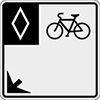
- Sign and diamond pavement markings designate on-street space for people cycling.
- Drivers are not allowed to park or drive in dedicated cycling space.

- Shows where drivers are permitted to turn across a cycle track to access an alley, driveway or intersection.
- Take note of the sign – does it show the cycle track you’re crossing is one-way or two-way? If it’s a two-way, you’ll need to make sure both directions are clear before proceeding.
- Signal before turning and give people cycling the right-of-way.
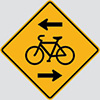
- Reminds drivers to look both ways for two-way bicycle traffic when entering a street.
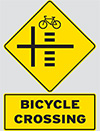
- Indicates a bicycle/pedestrian (multi-use) crossing is ahead.
- Drivers must yield to people cycling and walking in the crosswalk.
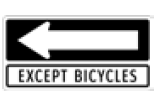
- Indicates the street is one-way only for drivers, but people cycling may travel in either direction within the designated cycling space.
- Look both ways for people cycling before entering the street.
Bicycle road markings
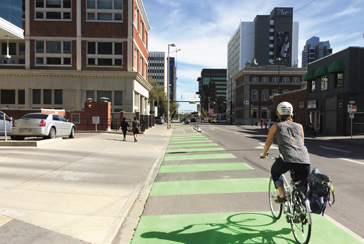
Green dashed lines
- Indicates a high congestion point for people driving, cycling and walking.
- Watch for and yield to people cycling and walking.
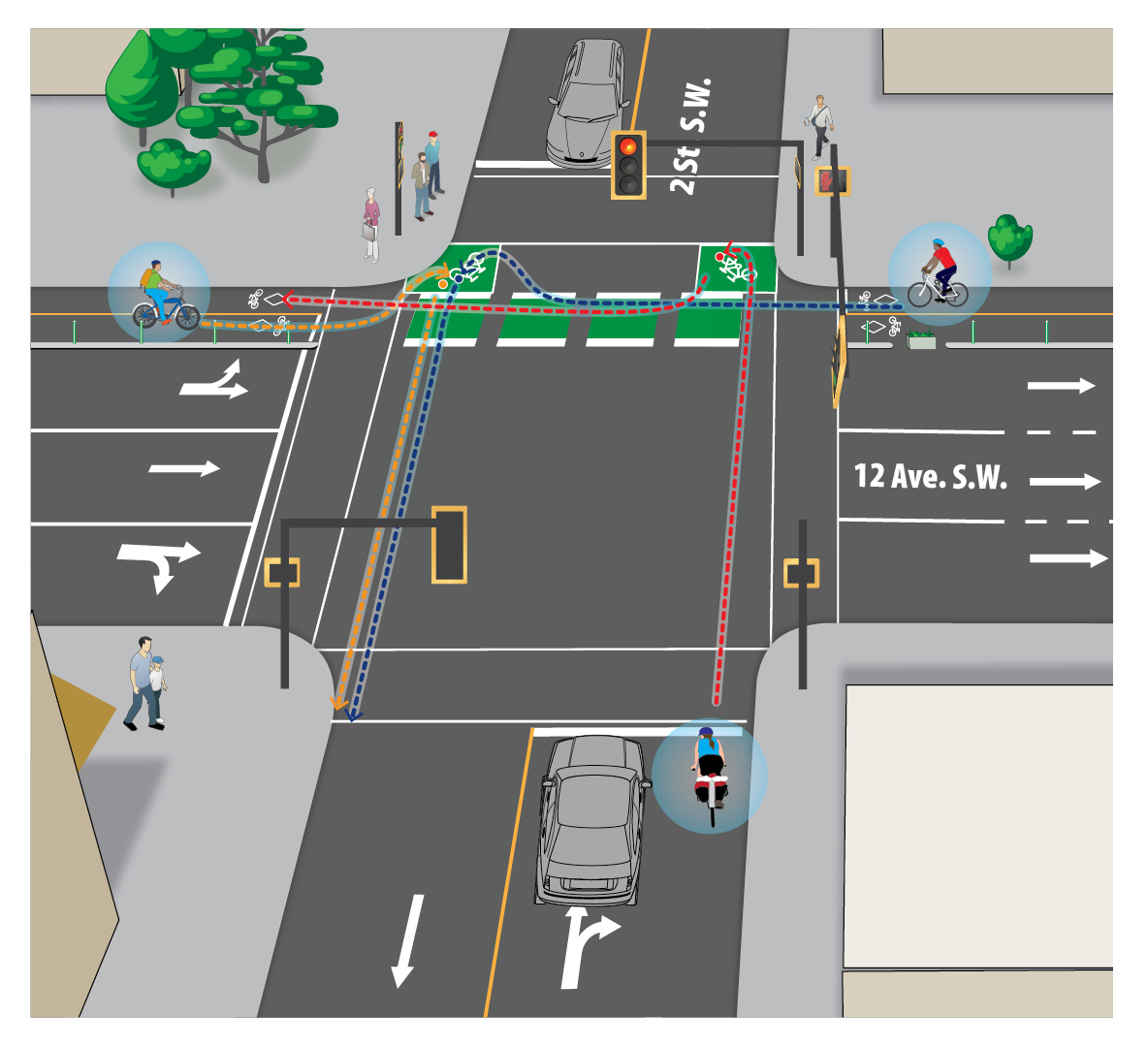
Green bike boxes at intersections
- Green road markings in the shape of a box are located at some intersections. They are called bike turn boxes. They give people cycling a safe space to change direction without having to cross oncoming vehicle traffic.
When driving:
- Do not block turn boxes or crosswalks.
- Do expect people cycling to wait in the turn box and get a head start on green.
See the complete list of cycling signs, road markings and traffic signals that applies to both cyclists and drivers.
Cycling laws and bylaws every driver should know
Bicycles are classified as vehicles under the Alberta Traffic Safety Act. This means people cycling have many of the same rights and legal responsibilities you have as a driver.
Complying with cyclists' legal rights
- Drivers are required to share all City roads, except Deerfoot Trail, with people cycling.
- Drivers must yield the full driving lane to people cycling when they need the extra space for their safety (they’re otherwise encouraged to keep to the right).
- Drivers must share the through-lane with people cycling where a right-turn-only lane is provided, unless a sign indicates otherwise.
- Drivers must share High Occupancy Vehicles lanes with people cycling.
- Drivers must yield to people cycling in a designated bicycle lane, except at intersections where traffic signs and signals determine the right of way for all road users.
- Drivers are to give people walking their bike the right-of-way just as they would a pedestrian.

